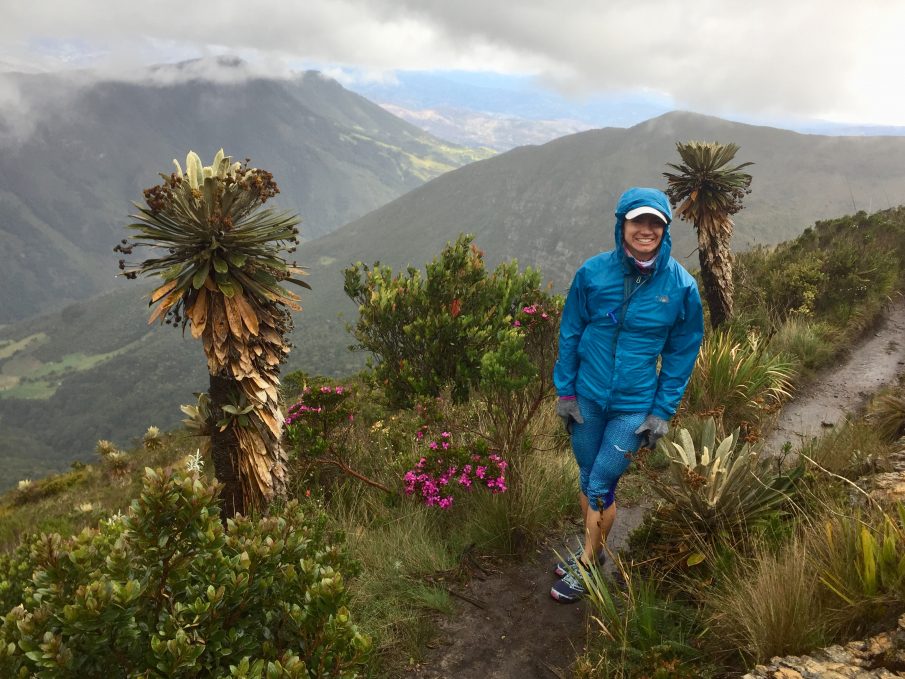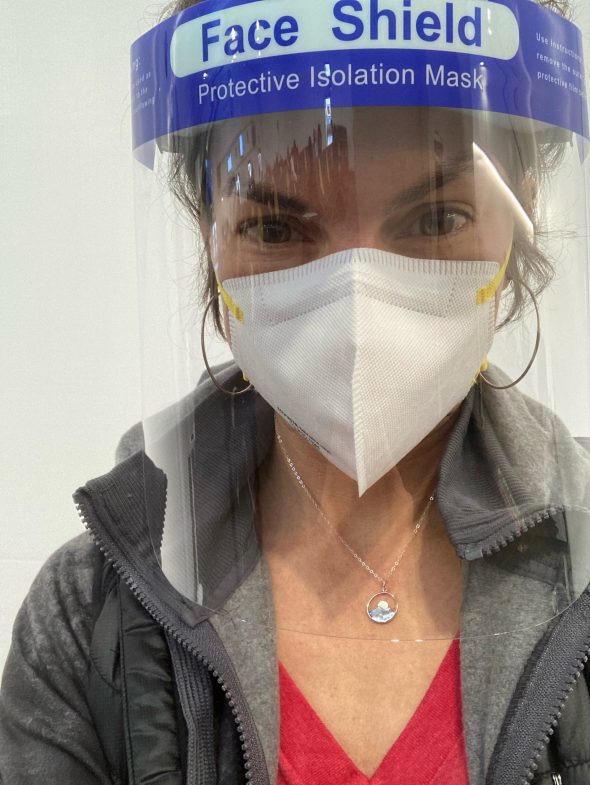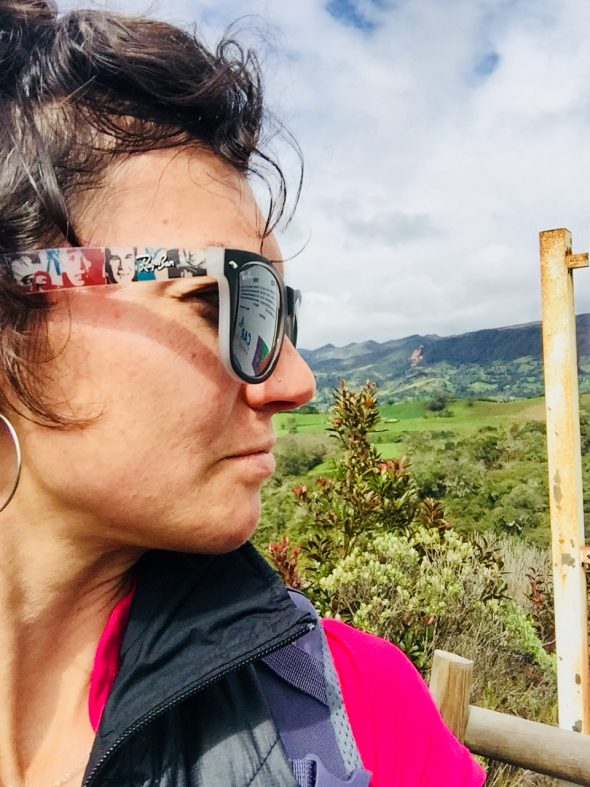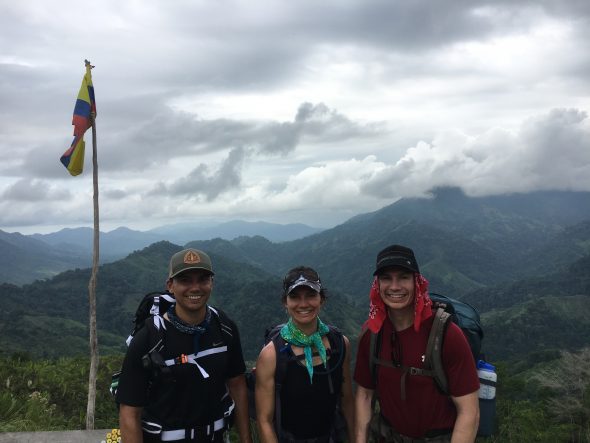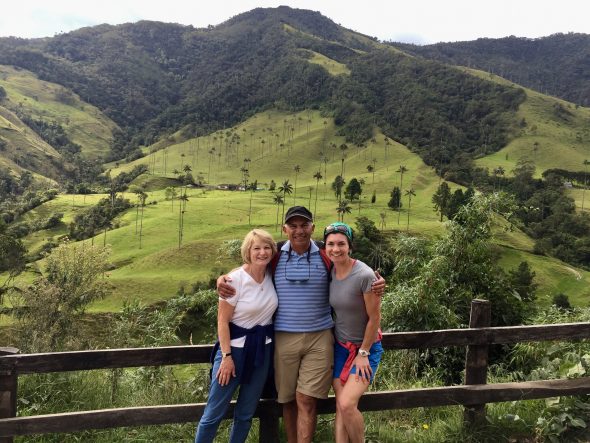I’ve never lived in a city that covers a huge area of land, or is extremely densely-populated, so Bogota is new to me for this reason as well as all the other reasons that fall under “South America”. But I’m sure some of the challenges and the access/opportunities are similar to what exists in New York City, San Francisco, and the like. So maybe some of you who have lived in a big city might relate to the reality I am now knowing of having more opportunities here (for work, restaurants, choices, museums..), but yet feeling “stuck” inside the city. There’s tons to do, but trying to get out is a burden. Even if I had a car, the traffic in and out of Bogota is horrendous. With one exception, up to this point buses are the way I’ve traveled outside of Bogota and I haven’t gone very far – a few hours at the most. Fortunately there are more than a handful of interesting and pretty places to visit within a relatively short distance to the north, west, and south of Bogota. The eastern border of Bogota is comprised of beautiful mountains, and I live pretty close to this border, yet I don’t think there are many options for traveling into them from here. (bummer)
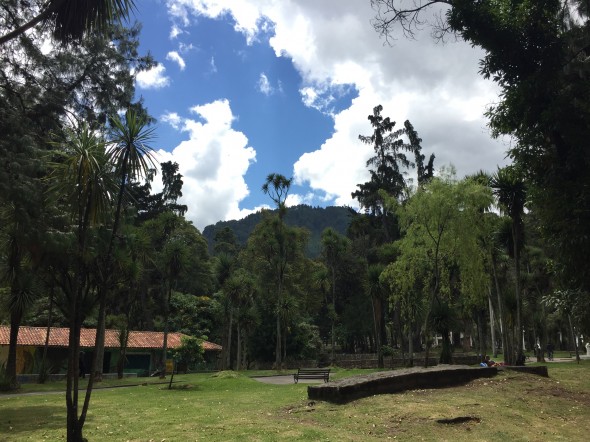
Besides wanting to connect with a place and create some community, I also want- and need- to get out and see other places of course! Travel is not cheap, even in a country that is generally much less expensive, and it adds up quickly. So local-travel is where it’s at for me right now. Here are some of the towns and small cities I’ve been to since moving here…
Monserrate is probably the most well-known local “hike” and it’s easily accessed from the east-central part of Bogota. My first visit to this mountaintop church was two days before Easter, on Good Friday. I had extra days off, so I thought it would be use good of that time to visit something new. I was so excited to get into the mountains, and challenge my Colorado legs with a steep hike. At the time, I was unaware that anytime during the week of Easter (“Semana Santa” = Holy Week) would be a horrible time to try this hike unless I wanted to do it with thousands of my Colombian neighbors
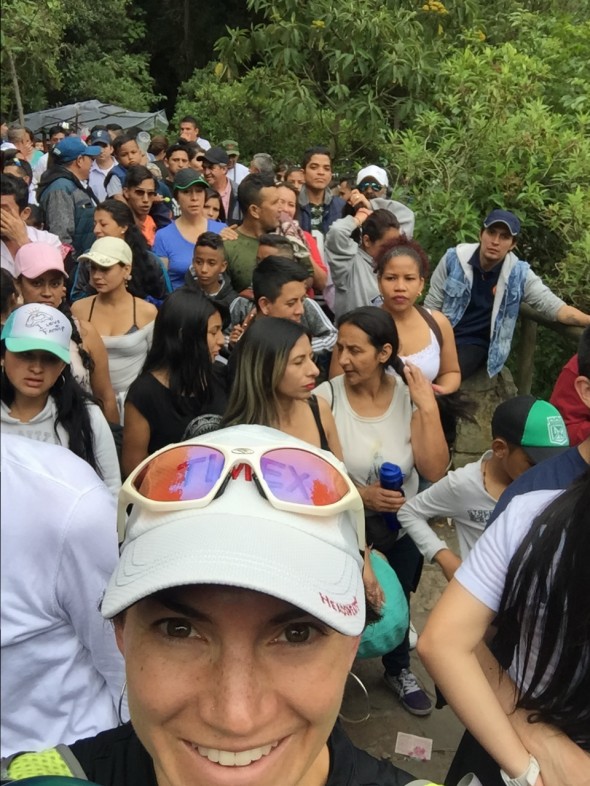
“We have in Monserrate foreseen that 200,000 people arrive throughout the Holy Week and about 50,000 people in the Virgin of Guadalupe [large memorial statue in the vicinity]. We hope that you come to visit us in a calm manner and, above all, enjoy this Holy Week,” –quote from a local government official
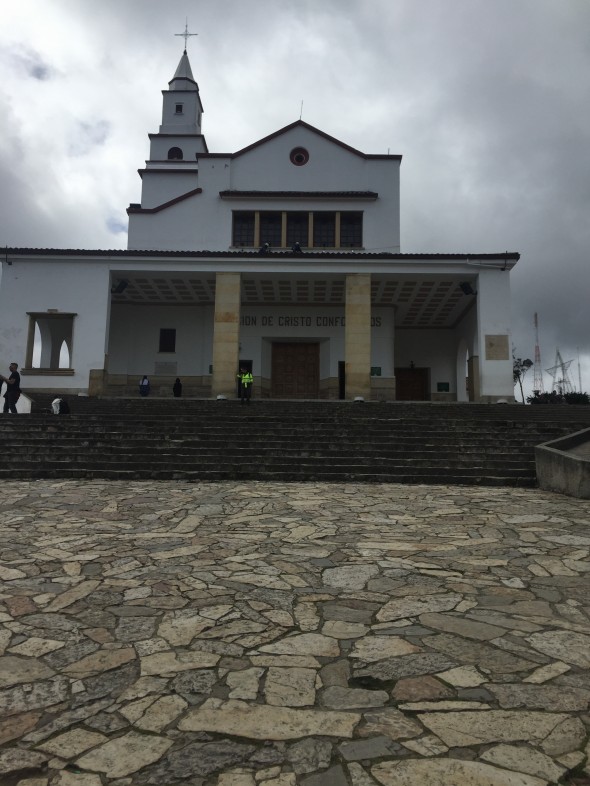
I also read that there would be up to 200 police lining the trail which is only 4km (2.5 miles). And I read all this AFTER my visit. The reason it’s so insanely-crowded is because it’s a pilgrimage. The church has special significance to many people and their families in this predominantly-Catholic country, especially during the week of Easter.
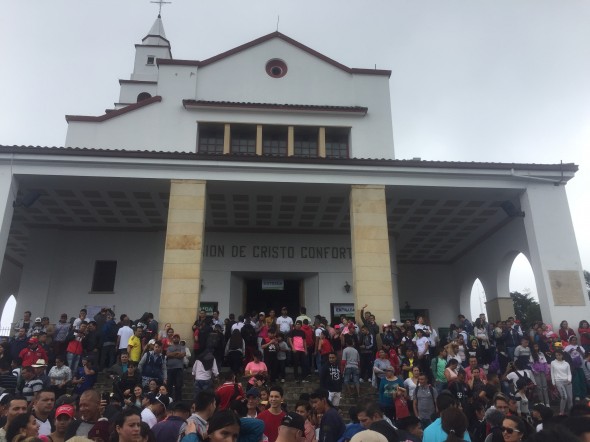
To be honest, I did not enjoy the “hike” very much because it was at a snail’s pace and sometimes a standstill. I felt like I was in a cattle herd (no offense to the other hikers!), and at one point I was pretty uncomfortable when the mass wasn’t moving for about 15 minutes. It made me nervous because I didn’t see an easy way out. I calmed my nerves by reminding myself that my trail-running (and occasionally bush-whacking) background could serve me well if needed!
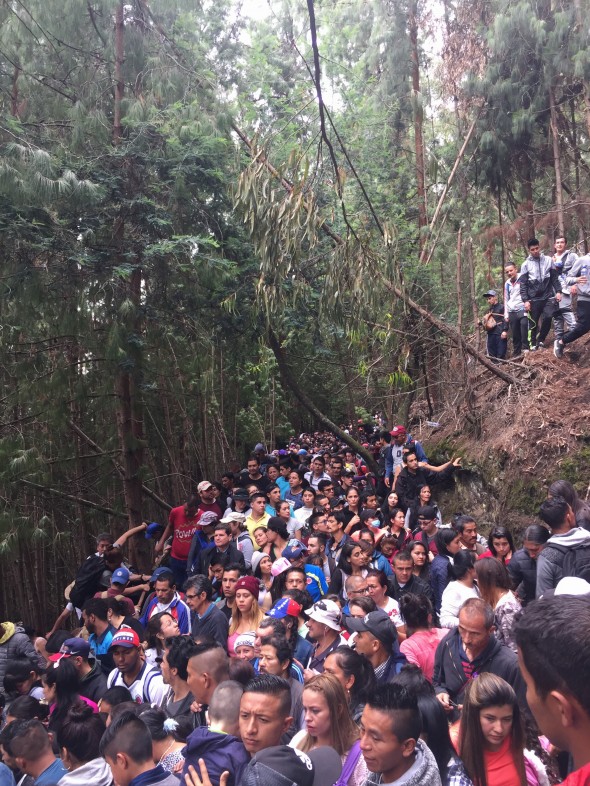
I re-visted Monserrate on a non-Good-Friday Friday a couple weeks ago. There were some police along the trail (a standard in this city in areas that they want the public to be able to access without worry), but I probably only saw about 35 hikers total as I ascended in 40 minutes and descended in 30. It’s super-steep and I couldn’t run most of it but the hike was a breathy challenge and I actually felt like I had escaped the busy-ness and pollution of the city and got to inhale some gorgeous Colombian-green scenery.
————————-
Zipaquira is a little over an hour drive north of Bogota. I was invited to visit this lovely little town, and the Salt Cathedral for which it is well-known, with a couple other Spanish students from a class I took in April. Lucky for us, one of the students owns a car! So in lieu of a seat-clutching bus ride, we instead endured the massive Bogota traffic as we exited the city. I learned the word for “massive traffic”- it is “trancon“; it’s possibly one of the most-used vocabulary words in Bogota (maybe along with another couple swear words which I won’t teach you here 😉 )
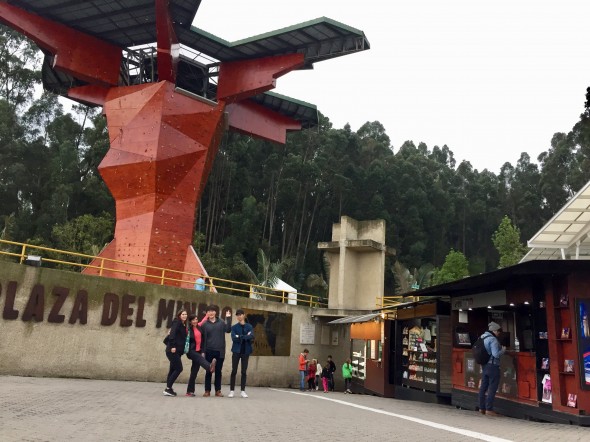
The Salt Cathedral, or “Catedral de Sal“, is a very unique sight and definitely worth the visit & entry fee in my opinion. It’s unlike any other cathedral I’ve seen, because it was carved into the salt mines 200 meters (220 yards) underground in a halite mountain. The first sanctuary was built around 1932, and then between 1991-1995 a new cathedral was built underneath the first one! Our visit and tour consisted of a good deal of walking down and through wide tunnels with small alcoves which would open up into huge rooms with many carved crosses and mysterious-seeming lighting.
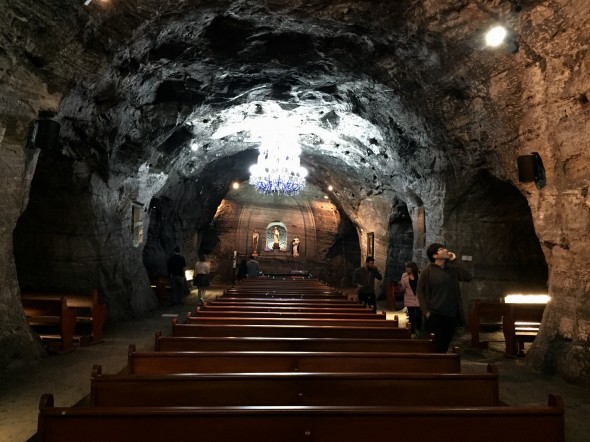
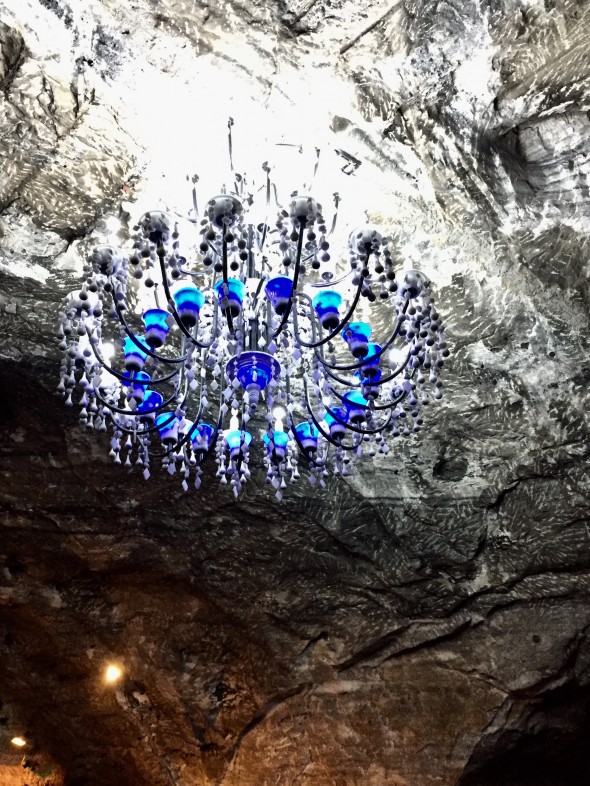
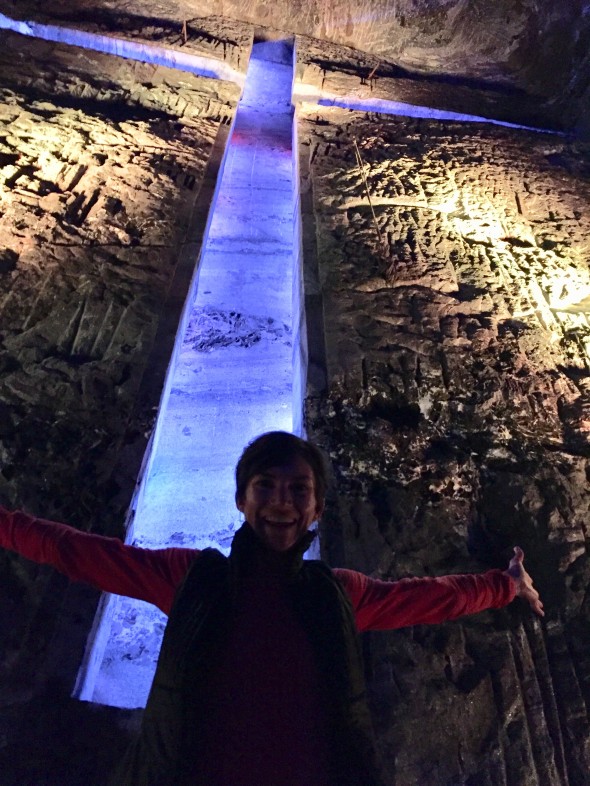
————————-
Another town I visited a couple months ago is called Villeta. I took this day-trip with my two other North American teaching colleagues, Rich and Jane. They are from Connecticut and moved here at the same time I did. It was a huge blessing to start this new journey with some other friendly and helpful Estadounidenses (the Spanish word for people-from-the-USA). We don’t live right near each other now, but try to get together every couple weeks to do something or at least catch up on life and commiserate on challenges!
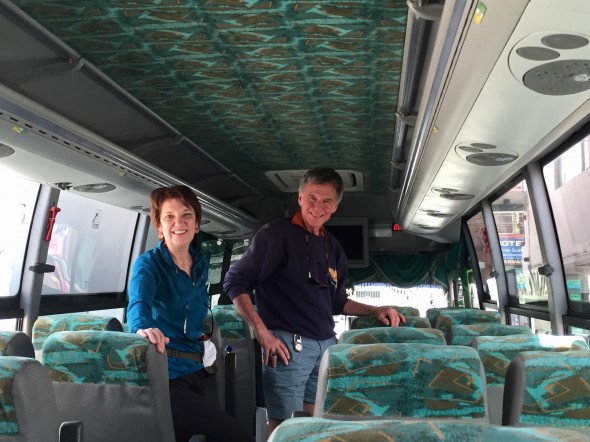
We endured a two hour super-not-smooth bus ride but I was pressed up against the window like an eager 4-year-old. The bus bumped and swayed over 5,000 feet down some twisty passes into the much-warmer town of Villeta, population only 25,000! The humid, warm air was heavy but welcomed after weeks of cool rainy weather in Bogota. Villeta is known for its sugar cane derivatives and is an important tourist center for people from Bogotá due to its warm climate, including nature trails, waterfalls and hotels. Hotels with pools seemed to be “the thing” there; as we walked around, I saw a handful that heavily advertised their pools (and some did not look too inviting)! The center of town has a really lovely square, which is where Rich and Jane and I spent a lot of time relaxing and people-watching, eating, and talking with locals. There are waterfalls and trails nearby, but this visit didn’t allow time for that. Maybe I’ll return again soon!
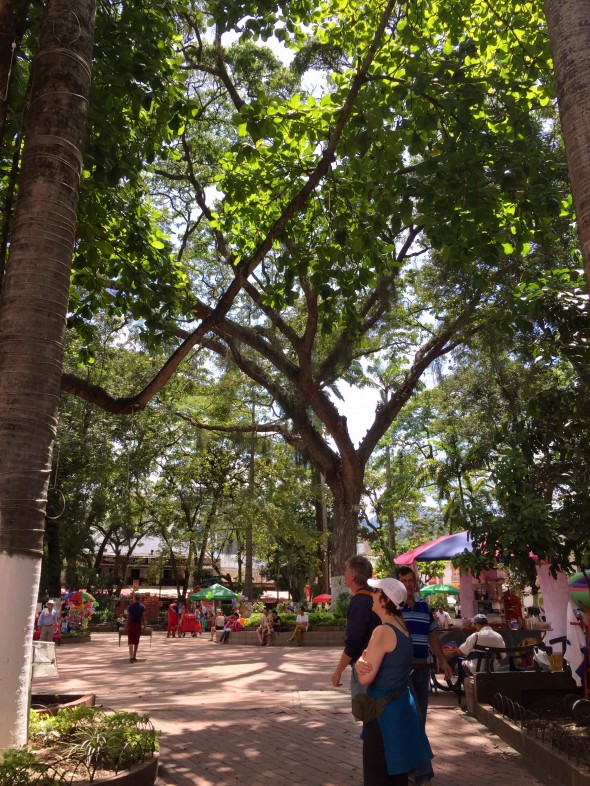
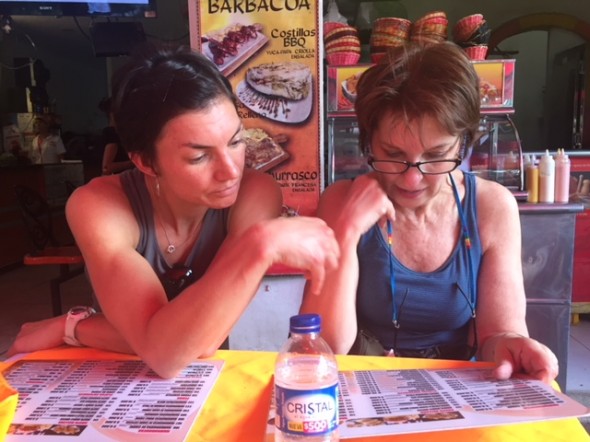
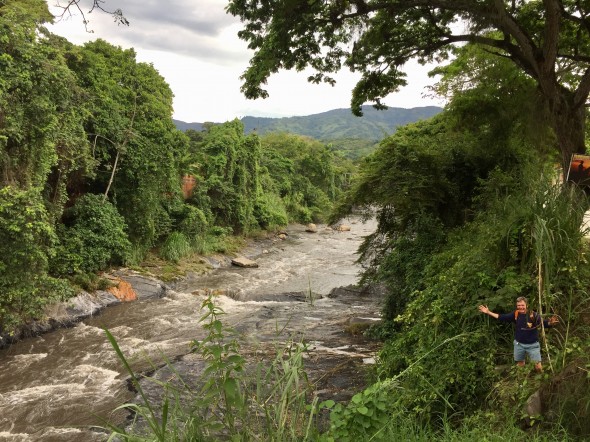
————————-
In May, one of my favorite people came to visit me! I met Brian Taylor in Boulder only months before my move to Bogota; we were introduced by a mutual friend who knew Brian had traveled throughout South America for over a year and could be helpful to me as I prepared to live here. We hit it off and have maintained contact since (he currently lives in Colorado), and I was thrilled he would make the trip to come visit. I think Latin America eventually calls back all who spend time here… 🙂
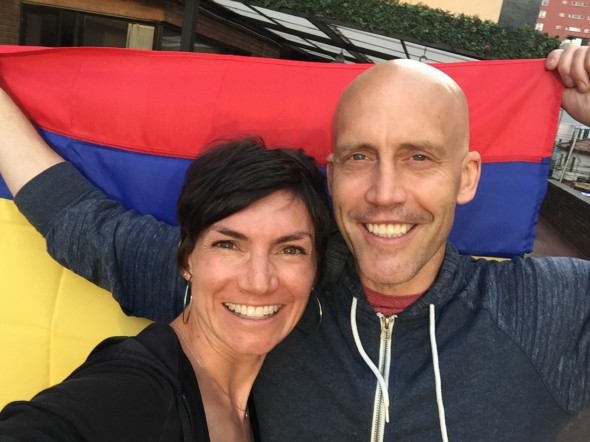
His visit was a great opportunity for me to check out some new things in and outside of Bogota. Inside the city, we ate fun food, explored some neighborhoods, did the Bogota Walking Tour (put on by the same company as Bogota Graffiti Tour that I took soon after moving here); spent way too much time on the buses getting around and out of town to a little suburb called Tenjo one Sunday afternoon, and best of all we went to Villa de Leyva for three days.
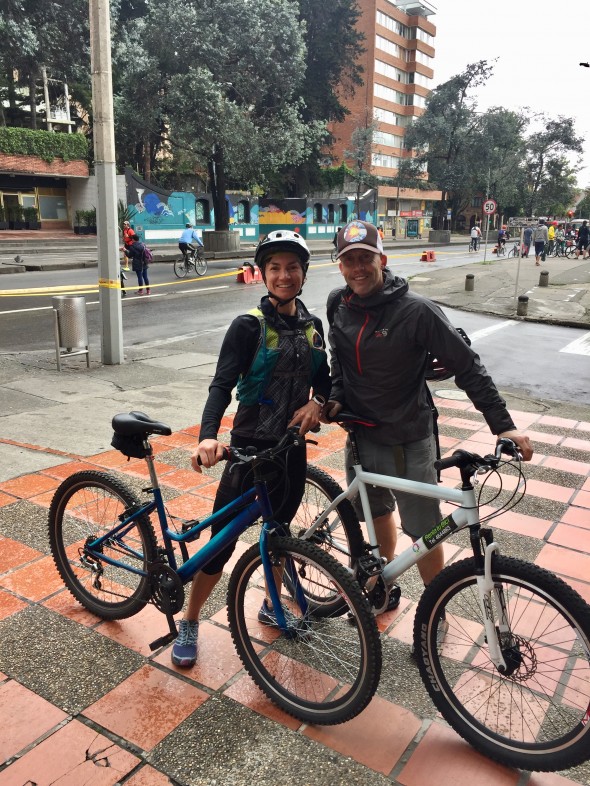
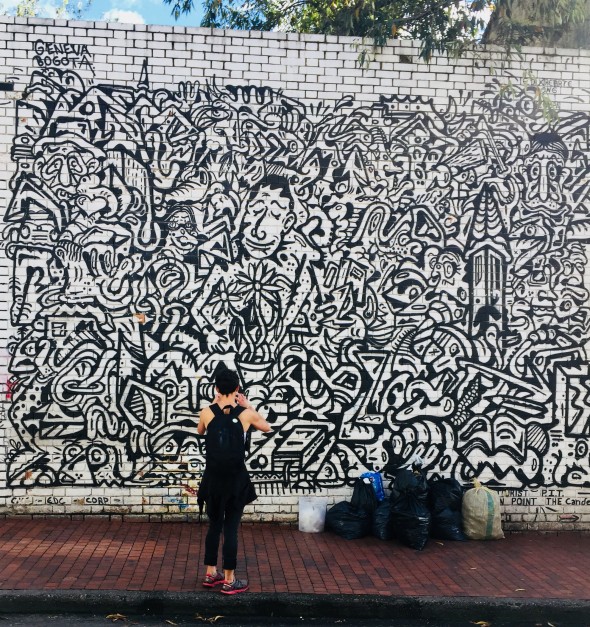
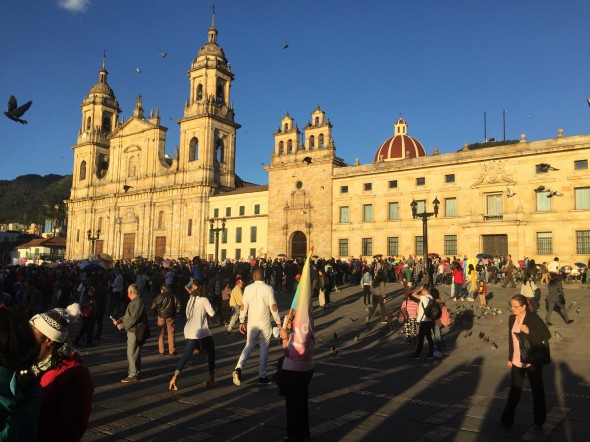
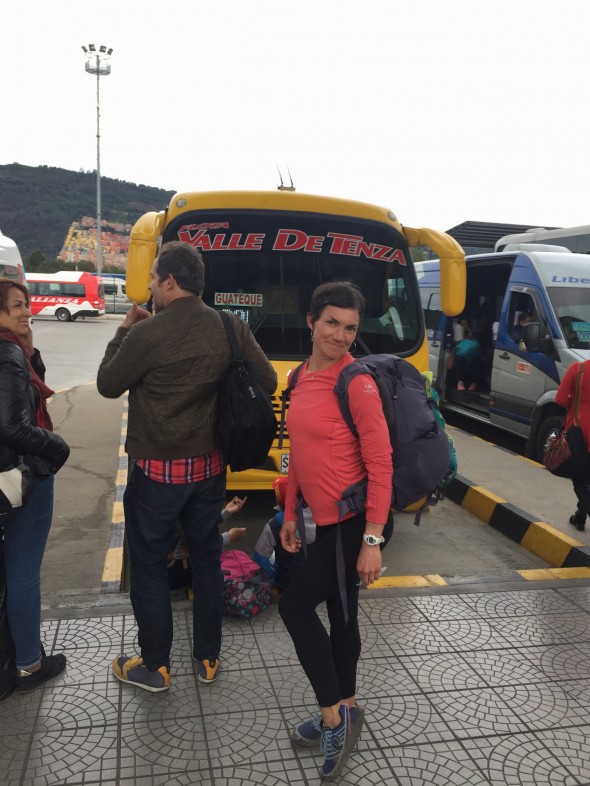
Villa de Leyva, a historic town founded in the 1500s with a population of only about 17,00, is three hours north of Bogota and surrounded by mountains in which we were able to hike and ride. We rented bikes from a great company called CicloTrip two days and explored the area on wheels and dirt – it was sooo refreshing and fun to get out and ride on not-pavement (bless the hearts of the organizers of Bogota’s Ciclovia but at some point it just doesn’t cut it!).
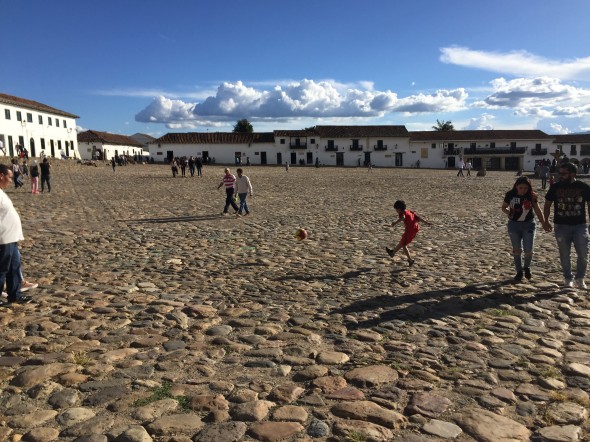
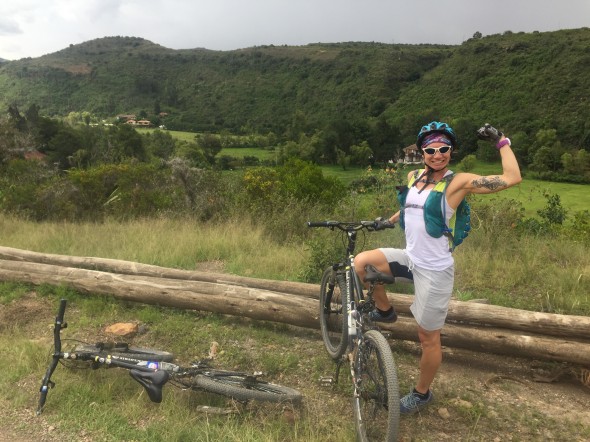
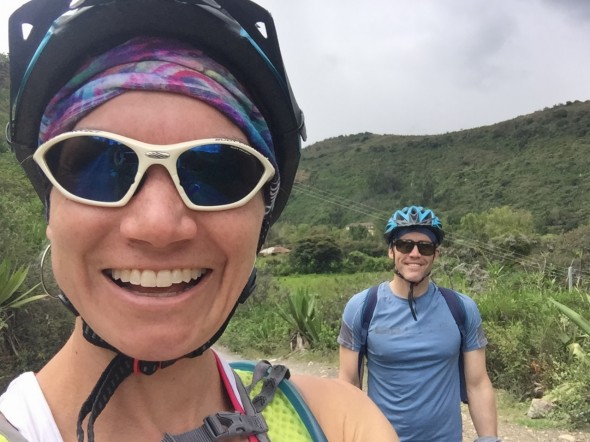
We also took 3/4 of one day to complete a challenging hike to a local lagoon called Laguna Iguaque, peaking at 12,500 feet. It felt good to my Colorado lungs! The trail is less than 6 miles roundtrip, but it took us about 3.5 hours without many breaks.
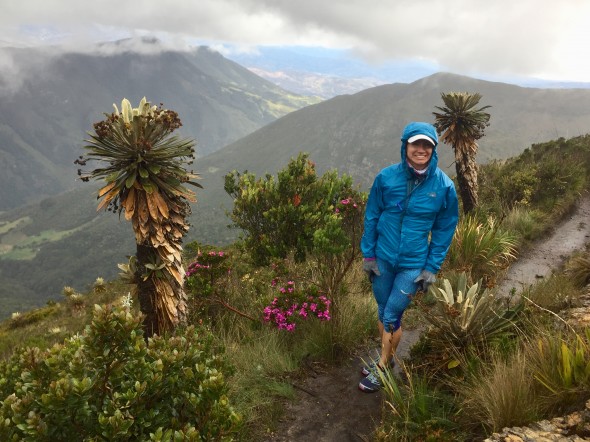
The area above tree line but below the snow line is called the “Paramo“, and Laguna Iguaque is located at this altitude. It was way chillier up there, with drizzle and rain the whole time until we descended below the tree line, at which point it became very sunny and beautiful.
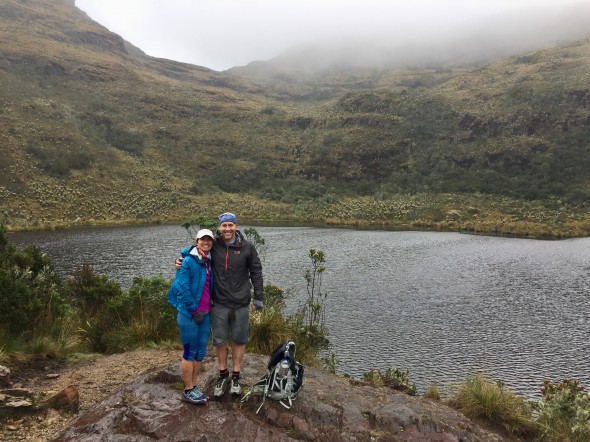
There is sooo much of this country I am looking forward to seeing, and I’ve received many recommendations from Bogotanos as well as some reading I’ve done. For now, my daily life and teaching is taking much of my time but with the intention that it will fuel and fund some fun and educational bigger travel during this year. Stay tuned!
People here are proud of the beauty of their country and happy to share suggestions and advice on where to visit and how to get there. But whatever you do, don’t hike to a cathedral during Holy Week. A Colombian probably could have told me that if I’d have asked.
